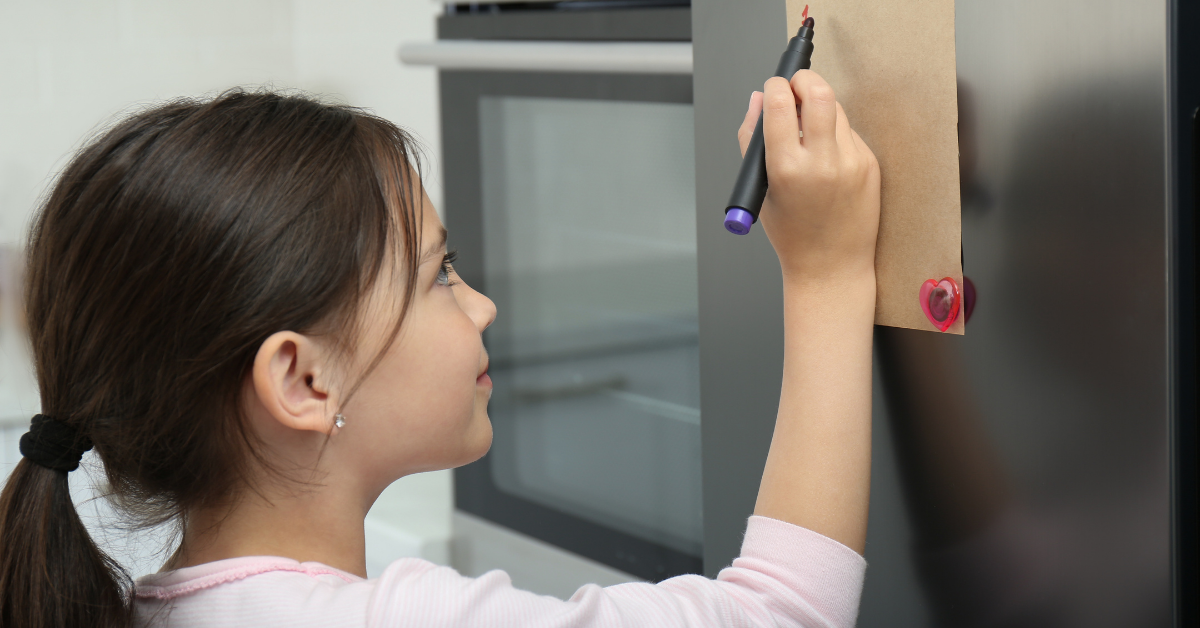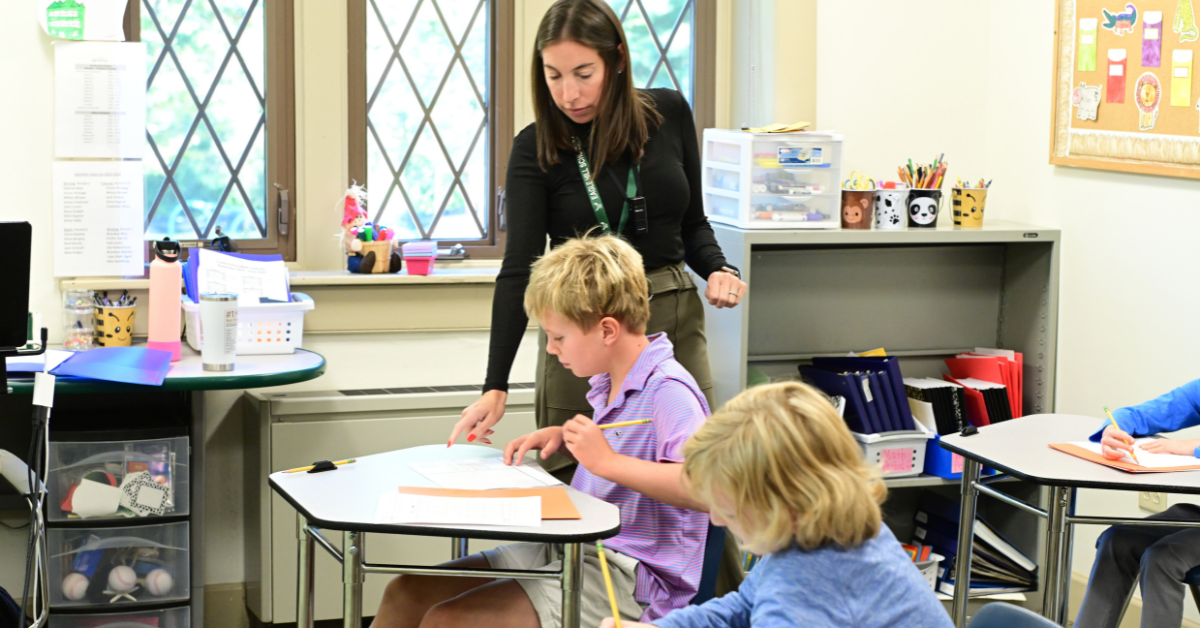School morning stress is all too real. For some families, it’s the most difficult time of day with emotions running high while everything else seems to come to a standstill. Meanwhile, the clock keeps ticking, and before you know it, the bus has taken off while the kids are struggling to get their shoes on. What should be an opportunity for the family to catch their breath before getting to work becomes the most stressful part of the day.
For children with learning differences, who may experience more classroom anxiety and have difficulty keeping up with routines, waking up on the wrong side of the bed might impact the way the rest of their day transpires. But the good news is that there are simple ways to help both your child and your family better manage the stress of going to school every morning.
Make a Checklist the Night Before
Did you finish your homework? Is it ready to go in your backpack? Do you know what you want to wear tomorrow? Is there something special you want to eat for breakfast or lunch?
Asking these questions a couple of hours before bedtime not only encourages a sense of accountability in children but also helps get them in the right mindset to get a running start in the morning. Organization is a valuable executive functioning tactic that is not only key in establishing routines but also helps instill a foundational sense of responsibility that kids can build healthy habits.
Creating a physical checklist that outlines their daily to-dos is a great way to give your child a sense of accomplishment every time they get something done. Adding a couple of easy points, like brushing their teeth, is also a good way to give them a little boost to their self-esteem while encouraging self-discipline.
Keep the checklist short, containing less than 10 items. But try to touch upon all of the important things they need to do. This could include something as simple as checking the weather so they know what clothes to lay out. Letting your child contribute to building the list can also help them feel a sense of ownership over their daily responsibilities.
Making sure the list is tangible makes it so your child can see and track their process while having the list visible on a whiteboard, on the fridge, or on their bedside table keeps it top of mind.

Get Enough Sleep
This step is critical. Your child should get at least eight hours of sleep every night. A full night’s rest is integral to a child’s mental and physical wellness—getting sleep allows your child to focus on the tasks they need to get done. Having a regular bedtime helps to enforce the routines outlined in the checklist.
They can perform a wind down activity that eases them into sleep. Reading, writing in a journal, or performing mindfulness meditation can soothe the mind. An hour before they go to bed, they should stop using electronics. The light from a television or computer screen resembles sunlight, which can trick the brain into remaining awake.
Have a Good Breakfast
Equally important to a full night’s rest is a good start to a child’s day. Breakfast is the best way to ease your child into the day and provides a natural opportunity for the family to get together and have a conversation about the day ahead.
Your child should eat plenty of essential nutrients. Dishes like pancakes and French toast are high in processed carbohydrates. They provide an initial burst of energy, but your child's levels will eventually crash.
Yogurt parfaits are loaded with vitamins and slow-burning natural carbohydrates. They have the sweetness of cereal without artificial ingredients. You can also give your child trail mix, fruit salad, and toast with nut butter. It is okay to give your child tea, especially green tea. But try to avoid giving them coffee. The caffeine rush can be a little overwhelming for younger children.

Give Your Child a Morning Pep Talk
With their checklist complete, a full night’s rest behind them, and a good, hardy breakfast in their bellies, your child is on their way to having a great day. But they may still be feeling a little anxious about what’s to come.
Utilizing a morning mantra or a series of affirmations to help further encourage their self-confidence can help mitigate some of the stress they’re feeling.
When it seems like they’re worried about school, sit down with them. Ask them what is wrong, then listen to what they have to say. There are many reasons why a child may be experiencing school morning anxiety.
Once you hear what the problem is, focus on the solution. Give your child suggestions for what they can do to overcome their problems. Give examples of similar situations in the past where they solved problems themselves.
These suggestions show your child that you’re their number one advocate and let them know they can come to you when they are faced with a problem. Keeping the conversation solution-oriented while staying focused on their experience shows them that you care while encouraging them to think positively even when they’re not feeling their best.
Practice Positive Visualization
If the morning routine isn’t going as planned and you can sense your child’s stress in the minutes before the bus comes, a useful technique to help them regulate their emotions is positive visualization. If they are feeling overwhelmed, tell them to sit down and close their eyes.
Describe a place or activity they like. Use a lot of visual detail so your child can envision the setting in their mind's eye. Use a calm voice and go at a slow pace so your child can process what you are saying. Techniques like this are valuable coping skills that can work especially well in helping those with learning differences find their footing when they're feeling anxious or uncomfortable.
If your child has trouble visualizing things in their head, you can give them visuals. Ask them to sit in front of comforting photographs and imagine themselves in the images. If your child is feeling too antsy to sit down, you can ask them to focus on breathing. They can walk at a slow pace or put items in their backpack while they pay attention to their breathing rate. This gives them something physical to do as they improve their mindfulness.
Progressive muscle relaxation can also help. Your child tenses and relaxes their muscles from head to toe. This lets them release their stress quickly while moving their body.
Help Your Child Better Manage Stress
Everyone needs to learn how to better manage stress. As parents, it’s your job to help your child better understand and process their emotions so that in times of stress, they can not only communicate what’s making them upset but also self-regulate and come up with lasting solutions.
The most important thing to keep in mind is that your child’s biggest advocate is you. The way you manage your own stress will influence the way your child handles theirs.
ABOUT EAGLE HILL SCHOOL
Eagle Hill School is a private school for students with learning differences located in Greenwich, Connecticut. Their academic program is designed to help students struggling with learning differences like auditory processing disorder, dyscalculia, dyslexia, ADHD, executive functioning disorder, and dysgraphia. Specialized remedial learning programs are taught by experienced teachers who help students navigate through learning challenges, preparing them for bright futures ahead. Contact us to learn more.


